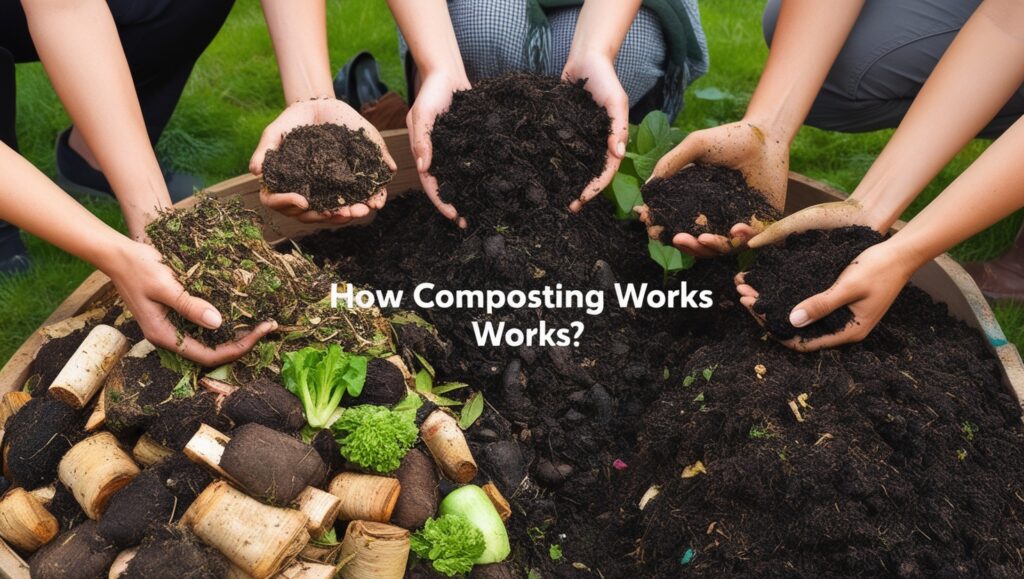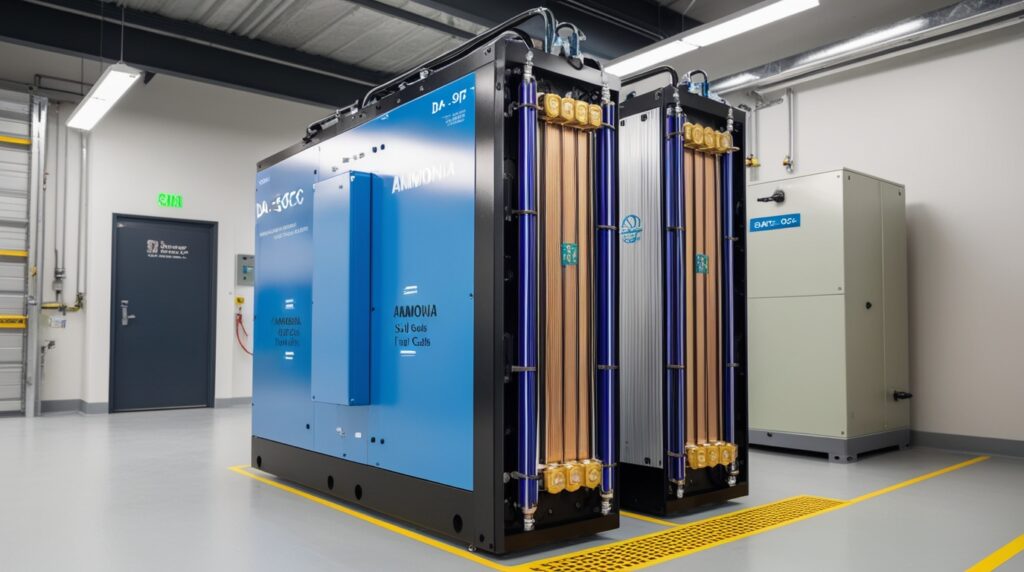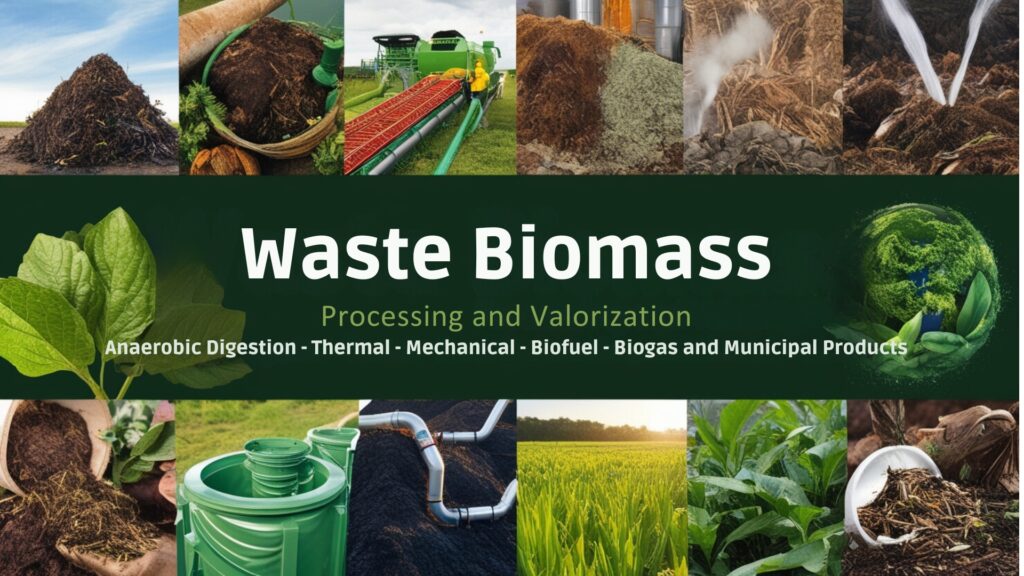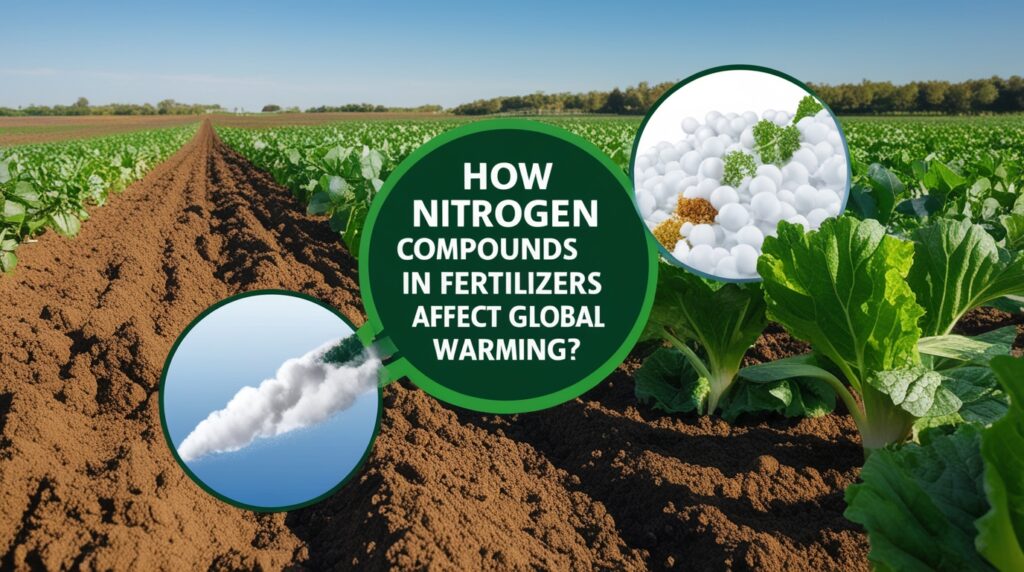
Introduction
Nitrogen compounds in fertilizers are crucial to modern agriculture, significantly impacting plant growth and food production. Common forms of nitrogen used in fertilizers include nitrate (NO3), ammonia (NH3), ammonium (NH4), and urea (CH4N2O). While these compounds enhance agricultural yields, their application also contributes to serious environmental issues, particularly the emission of nitrous oxide (N2O), a potent greenhouse gas with a global warming potential nearly 300 times greater than that of carbon dioxide (CO2) over a century. The reliance on nitrogen-based fertilizers raises concerns about their role in exacerbating climate change, as they contribute approximately 2.1% of global greenhouse gas emissions, largely through agricultural soil management practices.
The impact of nitrogen fertilizers on climate is marked by a duality of effects. While nitrous oxide emissions significantly contribute to global warming, nitrogen oxides produced from fossil fuel combustion can have a temporary cooling effect by forming reflective particles in the atmosphere. This complex relationship underscores the urgent need for sustainable agricultural practices and policies aimed at minimizing the adverse environmental impacts of nitrogen fertilizers. Controversies surrounding their use include debates on the effectiveness of various mitigation strategies, the role of precision agriculture, and the need for regulatory frameworks to manage emissions effectively.
Given the alarming trajectory of climate change, understanding how nitrogen compounds in fertilizers influence both agriculture and the climate system is essential. Enhanced nitrogen management practices, such as using nitrification inhibitors and controlled-release fertilizers, have emerged as potential solutions to reduce greenhouse gas emissions while maintaining agricultural productivity. Policymakers are increasingly focusing on fostering sustainable practices to address the environmental consequences associated with nitrogen fertilizer use, emphasizing the need for a holistic approach to mitigate the impacts of global warming linked to these essential agricultural inputs.
Nitrogen Compounds
Nitrogen compounds play a significant role in both agriculture and the climate system. The most prevalent forms of nitrogen utilized in fertilizers include nitrate (NO3), ammonia (NH3), ammonium (NH4), and urea (CH4N2O). Each of these compounds has unique properties that influence their effectiveness in promoting plant growth and their environmental impact.
Forms of Nitrogen in Fertilizers
Nitrate (NO3)
Nitrate is the principal nitrogen source for many plant species, whether derived from inorganic or organic sources. It is readily absorbed by plants through specialized transporters in the root cell membranes and is subsequently reduced to nitrite and then to ammonia within the plant cells. Nitrate’s solubility in water makes it accessible to plants, but it also raises concerns about leaching and environmental pollution, as excess nitrate can contaminate groundwater.
Ammonia (NH3)
Ammonia, another critical nitrogen form, can be absorbed directly by plants under certain conditions, particularly in waterlogged soils or acidic environments. However, its volatility necessitates careful management, as ammonia can evaporate if left on the soil surface. This volatility can lead to nitrogen loss and reduced fertilizer efficiency, which ultimately impacts crop yields and increases the risk of atmospheric pollution.
Ammonium (NH4)
Ammonium is less mobile in the soil compared to nitrate, as it binds to soil particles, which reduces the risk of leaching. However, excessive use of ammonium-based fertilizers can lead to soil acidification, necessitating monitoring of soil pH levels to maintain soil health.
Urea
Urea is widely used as a synthetic nitrogen fertilizer. It is absorbed intact by plants and must be converted to ammonia before it becomes available to them. While urea can be highly effective, improper application—such as leaving it on the surface without incorporation—can lead to significant yield penalties due to nitrogen loss through volatilization.
Impact on Climate
The transformation of nitrogen compounds in the environment also influences climate dynamics. Nitrous oxide (N2O), produced mainly from nitrogen-rich soils and fossil fuel combustion, is a potent greenhouse gas, with a warming potential nearly 300 times greater than carbon dioxide (CO2). On the other hand, nitrogen oxides, which are short-lived atmospheric pollutants resulting from fossil fuel combustion, can contribute to cooling effects by forming fine particles that reflect sunlight.
Mechanisms of Global Warming
Global warming is primarily driven by the accumulation of greenhouse gases (GHGs) in the atmosphere, which trap heat from the sun. The major GHGs include carbon dioxide (CO2), methane (CH4), and nitrous oxide (N2O), each contributing to the greenhouse effect through different mechanisms and with varying impacts on climate change.
Greenhouse Gas Emissions
The production of GHGs has significantly increased over the past 200 years, largely due to human activities such as industrial processes, agricultural practices, and transportation. For instance, CO2 emissions arise predominantly from the burning of fossil fuels, while methane is emitted during the production and transport of coal, oil, and natural gas, as well as from livestock and other agricultural practices. Nitrous oxide, on the other hand, is primarily released from agricultural soils, especially through the use of nitrogen-based fertilizers, and has a global warming potential (GWP) that is approximately 298 times greater than CO2 over a 100-year period.
The Role of Nitrous Oxide
Nitrous oxide (N2O) is particularly concerning in the context of fertilizers, as its emissions contribute to the greenhouse effect while also depleting the ozone layer. It is generated naturally through the nitrogen cycle, but human-induced activities, especially the application of nitrogen fertilizers, have substantially increased its atmospheric concentration. These emissions can persist in the atmosphere for a long time and contribute to the warming effect.
Feedback Mechanisms and Tipping Points
Rising global temperatures can trigger feedback mechanisms that exacerbate climate change. For instance, as the planet warms, permafrost thaws, releasing stored methane and CO2, which in turn leads to further warming. The Intergovernmental Panel on Climate Change (IPCC) warns that crossing certain tipping points could initiate self-amplifying feedback loops that result in catastrophic changes to the climate system, such as the melting of ice sheets and significant sea-level rise.
Impacts of Warming
Every fraction of a degree of warming results in increasingly severe climate impacts, including extreme weather events, sea-level rise, and loss of biodiversity. For example, a rise of just 1.5 degrees Celsius is projected to expose 950 million people to water stress and increase the risk of flooding by 24%. The implications for both human and natural systems are profound, necessitating urgent action to mitigate emissions and enhance adaptive capacities.
Synergies between Mitigation and Adaptation
Transformative adaptation measures can not only mitigate the effects of climate change but also promote resilience. Practices such as climate-smart agriculture, which includes methods like agroforestry, have been shown to enhance agricultural resilience while simultaneously reducing emissions. Therefore, addressing GHG emissions, particularly from nitrogen-based fertilizers, is crucial for both mitigation efforts and the adaptation of vulnerable communities and ecosystems.
Impact of Fertilizers on Nitrogen Compound Emissions
Nitrogen fertilization in agriculture is a significant contributor to environmental issues, particularly through the emission of reactive nitrogen (Nr) gases such as nitrous oxide (N2O), ammonia (NH3), and nitrogen oxides (NOx) from agricultural lands. Globally, approximately 50% of total nitrogen fertilizer inputs are utilized for crop growth, highlighting the widespread reliance on these fertilizers in modern agriculture.
Emission Profiles of Nitrogen Fertilizers
The application of nitrogen fertilizers can lead to substantial emissions of N2O, a potent greenhouse gas that is 265 times more effective at trapping heat in the atmosphere than carbon dioxide (CO2) over a century. Research indicates that synthetic nitrogen fertilizers alone account for about 2.1% of global greenhouse gas emissions, with production and transportation processes contributing significantly to carbon emissions. Moreover, a study found that the nitrogen fertilizer supply chain emitted the equivalent of 1.13 gigatonnes of CO2 in 2018, underscoring the urgent need for mitigation strategies.
Seasonal Variations and Agricultural Practices
The flux of N2O emissions can vary significantly based on agricultural practices and the timing of nitrogen application. Studies have shown that when nitrogen fertilizer is not used, as in control treatments, the seasonal and annual N2O emissions are markedly lower compared to other fertilization treatments. For example, the seasonal N2O emissions from fields with nitrogen applied at 150 kg ha-1 averaged only 2.26 μg m-2 h-1, indicating that lower application rates can substantially reduce emissions.
Best Management Practices
To minimize nitrogen emissions, adopting best management practices (BMPs) is crucial. These include applying fertilizers close to the periods of high crop nitrogen uptake, which helps to synchronize nutrient availability with plant needs and reduce losses to the environment. The timing and method of application—such as split applications—have also been shown to improve nitrogen use efficiency (NUE) and minimize emissions.
Policy and Regulatory Framework
In response to the environmental impacts of nitrogen fertilizers, various international agreements and governmental policies have been developed to curb emissions. The European Commission’s European Green Deal is one such initiative aimed at fostering sustainable agricultural practices and reducing pollution through comprehensive transformation policies. Programs that incentivize the adoption of new technologies and sustainable practices are also essential to encourage farmers to minimize nitrogen emissions and enhance agricultural sustainability.
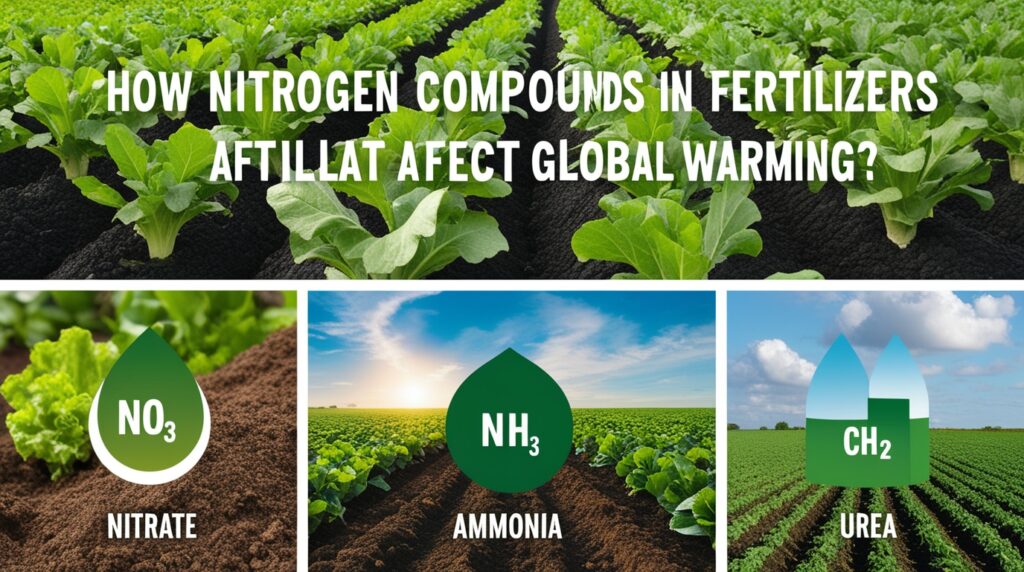
Case Studies
Fertilizer Emissions in West Africa
A collaboration project between the Syngenta Foundation for Sustainable Agriculture and the Africa Rice Center highlighted the need for improved nutrient management systems in West African rice farming. The project focused on validating a Decision Support System designed to optimize fertilizer use, which is critical for enhancing productivity while minimizing nitrogen losses to the environment. The findings suggest that tailored nutrient management strategies could significantly mitigate nitrogen emissions in this region.
Emission Factors of Nitrogen Fertilizers in Bangladesh
In Bangladesh, research has demonstrated varying nitrogen oxide (N2O) emission factors associated with different types of fertilizers. A study found that chemical fertilizers resulted in N2O emission factors of approximately 2.4% for spinach crops, while cabbage crops exhibited a broader range of 8.9% to 11.5% for chemical fertilizers and 0.4% to 0.8% for organic fertilizers. This highlights the need for careful selection and application of fertilizers to minimize greenhouse gas emissions while maintaining crop yields.
Comparative Analysis of Fertilizer Types
A study analyzing the emission intensities of reactive nitrogen for different fertilizers indicated that slow-release chemical fertilizers have a higher intensity of N2O emissions compared to ammonia (NH3). For instance, cumulative N2O emission intensities from slow-release fertilizers increased significantly after topdressing, demonstrating the dynamic nature of emissions in response to fertilization practices. Conversely, organic fertilizers showed lower cumulative emissions, emphasizing their potential role in reducing nitrogen pollution.
Nutrient Management Strategies in Asia
Research in East, South, and Southeast Asia has identified critical risk factors contributing to nitrogen pollution and its interaction with climate change. Heavy reliance on nitrogen inputs in agriculture, combined with high precipitation rates, poses significant threats to water quality in these regions. Effective nutrient management strategies, such as the adoption of cover crops and advanced application techniques, have been proposed as means to improve resilience against extreme weather events while enhancing water quality and agricultural productivity.
Economic and Institutional Factors
Investigations into the factors driving nitrogen pollution have shown that economic development, population size, and institutional quality significantly influence the capacity of nations to manage nitrogen inputs effectively. Countries that implement innovative nutrient management practices can reduce nitrogen emissions without sacrificing agricultural productivity, thus highlighting the potential for policy-driven solutions to address environmental challenges associated with fertilizer use.
Mitigation Strategies
Mitigating the impact of nitrogen compounds in fertilizers on global warming requires a multifaceted approach that addresses both agricultural practices and broader policy frameworks.
Policymaking and Inclusive Strategies
Policymakers can implement strategies that promote equitable distribution of costs and benefits associated with greenhouse gas (GHG) emissions reductions. For instance, as governments phase out coal-fired electricity generation, they can simultaneously establish subsidized job retraining programs to assist workers in acquiring skills for new, sustainable job opportunities. Moreover, interventions aimed at enhancing public transit access can be paired with initiatives to improve affordable housing availability, ensuring a holistic approach to urban planning and environmental sustainability.
Decision-Making Processes
Inclusive and transparent decision-making processes are essential for fostering public trust and support for transformative climate action. Engaging communities in participatory forums can mitigate unintended consequences while enhancing the legitimacy of climate policies.
Agricultural Practices
A significant portion of nitrogen emissions originates from agricultural practices. Recent studies highlight the varying effectiveness of N2O mitigation strategies in agriculture. Approximately 46% of analyzed practices resulted in significant N2O reductions, while others exhibited neutral or even adverse effects. The most effective practices included the use of nitrification inhibitors, biochar amendments, and controlled-release fertilizers, which demonstrated notable reductions in N2O emissions.
Precision Agriculture
Adopting precision farming techniques can enhance the efficiency of nutrient usage and reduce environmental impacts. Precision farming employs advanced diagnostic tools to tailor fertilizer application to specific crop needs and soil conditions, thereby optimizing resource use and minimizing nutrient losses.
Fertilizer Innovations
To improve nitrogen use efficiency, the development of innovative fertilizer products is crucial. Companies are exploring controlled-release fertilizers and other smart agri-inputs based on advanced scientific principles, aiming to minimize nutrient losses through leaching and gaseous emissions. Policies promoting enhanced efficiency fertilizers, which include nitrification and urease inhibitors, could further support these efforts and align with sustainability goals.
Broader Agricultural Strategies
Strategies such as dietary shifts towards plant-based diets, reduction of food waste, and improvements in N-use efficiency can collectively mitigate the environmental pressures associated with food production. Addressing the food system comprehensively, alongside robust agricultural practices, will be necessary to combat the escalating climate crisis effectively.
Recent Research Findings
Recent studies have focused on the impacts of nitrogen compounds in fertilizers on global warming, particularly through the emission of nitrous oxide (N₂O). A comprehensive meta-analysis included data from 46 published articles spanning research conducted between 2001 and 2020 across 11 countries, primarily in Asia and Africa. The findings indicate that emissions from nitrogen fertilizers are not solely linked to their production but significantly arise during their use in agricultural practices.
Emission Trends and Influences
Nitrous oxide emissions in the United States, for instance, decreased by 3% from 1990 to 2022, largely due to regulatory standards affecting mobile combustion. However, emissions from agricultural soils have remained relatively stable over the same period. Globally, it is reported that 40% of total N₂O emissions stem from human activities, predominantly from agriculture and nitrogen fertilizer application. Research indicates that the majority of emissions for fertilizers occur during their usage phase, highlighting the need for effective nitrogen management strategies to mitigate these emissions.
Quality Criteria for Research
The studies included in the meta-analysis adhered to stringent quality criteria, emphasizing the importance of experimental design in understanding nitrogen use efficiency and its implications for emissions. Only field experiments that were replicated multiple times and specifically compared nitrogen treatments were considered valid for inclusion.
Global Perspectives
Countries such as the European Union, Japan, and South Korea have made strides in reducing anthropogenic N₂O emissions, although they remain significant contributors globally. Meanwhile, regions like Brazil, China, and India are witnessing rapid increases in emissions due to heightened agricultural output. This trend emphasizes the complex relationship between fertilizer use, agricultural practices, and their environmental consequences.
